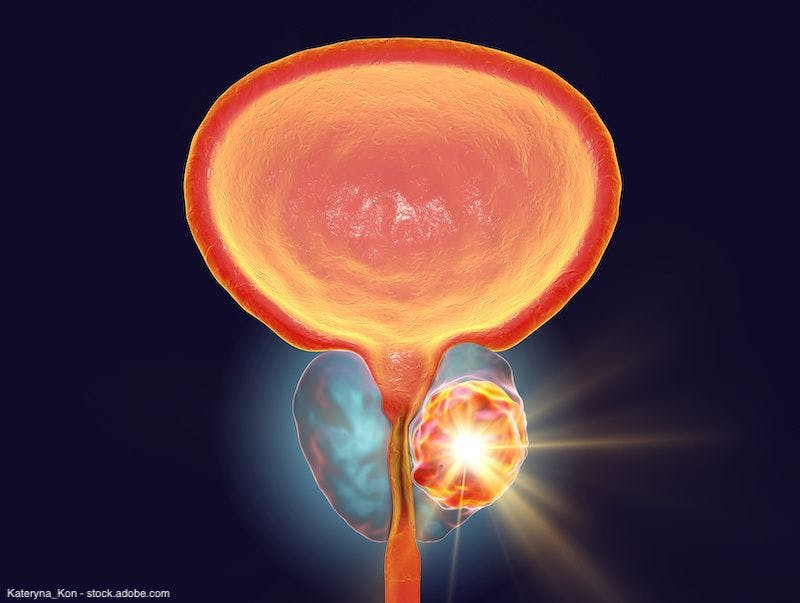Publication
Article
Urology Times Journal
RP appears more effective against high-risk prostate cancer
Author(s):
"It’s very possible that the PSA screening-detected high-risk prostate cancer portends a more favorable outlook when compared with the pre-PSA era, regardless of the type of primary therapy utilized," writes Badar M. Mian, MD.
Badar M. Mian, MD

Traditionally, radical prostatectomy (RP) for patients with high-risk prostate cancer was considered less effective than external beam radiation therapy (EBRT) combined with androgen deprivation therapy. Emerging data over the past decade have demonstrated that RP with adjuvant or salvage therapy can be as effective as EBRT combined with androgen deprivation therapy.
In a study by Chierigo et al,1 the authors evaluated the roles of RP and EBRT in terms of the difference in cancer-specific mortality (CSM) for men with high-risk prostate cancer in the Surveillance, Epidemiology, and End Results (SEER) database. The authors hypothesized that there is no CSM difference between RP and EBRT.
It is important to understand the different definitions of high-risk prostate cancer. The National Comprehensive Cancer Network (NCCN) definition includes either Gleason scores (GS) of 8 to 10 (Grade Group 4-5) or prostate-specific antigen (PSA) level greater than 20 ng/mL or clinical stage of at least T3. They further subdivided the high-risk prostate cancer cohort based on the Johns Hopkins classification into Johns Hopkins high-risk (JH-HR) groups (cT3a or Grade Group 4 or PSA>20 ng/mL) and very high-risk (JH-VHR) groups (cT3b-cT4 and/or primary Gleason pattern 5 and/or 2-3 HR features and/or≥5 positive biopsy cores with Grade Group 4).
Within the SEER database, CSM was defined as deaths attributable to prostate cancer as noted on the death certificates. Conversely, other cause mortality was defined as deaths attributable to causes other than prostate cancer. Within the SEER database (2010-2016), the authors identified all RP-treated or EBRT-treated patients. The primary outcome measure for this analysis was to determine whether any differences in CSM existed between RP and EBRT in the entire cohort of NCCN HR patients, and any survival differences, based on the treatment, existed within the JH-HR and JH-VHR subgroups.
Of the 24,407 NCCN patients with high-risk prostate cancer, 9823 (40%) underwent RP and 14,584 (60%) received EBRT. When divided into subgroups, 10,300 (42%) were classified as JH-HR and 14,107 (58%) were JH-VHR.
Of JH-HR patients, 4863 (47%) were treated with RP and 5437 (53%) with EBRT. Of the JH-VHR patients, 4960 (35%) were treated with RP and 9147 (65%) with EBRT. Patients receiving brachytherapy, alone or in combination, were excluded.
Among the main cohort, EBRT patients were older (median age, 71 vs 64 years), had higher PSA values (median, 13 vs 8 ng/mL), and had higher clinical T and N stages. Also, the 5-year other cause mortality rates were higher in the EBRT group compared with RP (12% vs 3.4%).
The authors utilized propensity score matching (PSM) to the entire cohort of NCCN high-risk patients to account for variation in baseline characteristics.PSM resulted in 2 equal groups of 7363 RP and 7363 EBRT patients, with no residual significant differences in age, PSA, biopsy GS, and clinical T and N stages. The median follow-up durations of patients without an event were 41 months and 35 months for RP and EBRT, respectively. The CSM rates at 5 years of follow-up were 2.3% (95% CI, 1.9-2.9) for RP and 4.1% (95% CI, 3.4-4.8) for EBRT (P<.01). This resulted in a multivariate competing-risk hazard ratio of 0.68 (95% CI, 0.54-0.86; P<.001) in favor of RP. Further, the JH-VHR group was an independent predictor for higher CSM (HR, 4.2; P<.001) relative to the JH-HR group.
After applying PSM to the JH-VHR cohort, 2 equally sized groups of 4020 RP and 4020 EBRT were identified, with no residual statistically significant differences in age, PSA, biopsy GS, or clinical T and N stages. The CSM rates at 5 years were 3.5% for RP and 6.0% for EBRT (P<.001), for a competing-risk multivariate hazard ratio of 0.58 (P<.01) in favor of RP.
Similarly, for the JH-HR cohort, matched groups of 3207 RP and 3207 EBRT were identified, without any residual statistically significant differences in age, PSA, biopsy GS, and clinical T and N stages. The CSM rates at 5 years of follow-up were 0.7% for RP and 1.2% for EBRT, with a statistically insignificant multivariate competing-risk hazard ratio of 0.7 (P=0.2).
High-risk prostate cancer requires discussion and planning for multimodality therapy, regardless of which primary therapy is used initially. In clinical practice, androgen deprivation therapy is used for virtually every patient receiving EBRT for high-risk prostate cancer. However, this information (ie, the percentage treated and the dose and duration of androgen deprivation therapy) is not available in this data set. Similarly, 50% or more of high-risk post-RP patients will require adjuvant or salvage (EBRT or androgen deprivation) therapy, but this information is also not available in the data set used for this analysis. Further, this population-based data set does not provide information regarding comorbidities and other factors that lead to the selection of one therapy over the other. PSM was used to account for the fact that the EBRT cohort was older and had higher PSA level and higher stage; however, it cannot account for all the unmeasured confounders. Despite several limitations, this type of analysis might be our best source of data regarding the comparative effectiveness of various treatment modalities for high-risk prostate cancer until the ongoing randomized controlled trials are completed.
Several important points can be gleaned from this analysis of large, population-based data set of patients with high-risk prostate cancer, which is further analyzed as JH-HR and JH-VHR cohorts. The JH subclassification into HR and VHR seems to be a robust prognostic variable for CSM. CSM was lower for patients treated with RP, compared with EBRT, in the entire NCCN cohort and in the subgroup of patients with JH-VHR prostate cancer, but not in the JH-HR subgroup. This may be because the event rate (ie, death) was quite low in the JH-HR prostate cancer group. It is interesting to note that in the JH-HR group, the 5-year CSM rate was only 0.7% for RP and 1.2% for EBRT. It’s very possible that the PSA screening-detected high-risk prostate cancer portends a more favorable outlook when compared with the pre-PSA era, regardless of the type of primary therapy utilized. These data can be useful when counseling patients regarding primary RP or EBRT and the risk of death following definitive treatment of high-risk prostate cancer.
Reference
1. Chierigo F, Wenzel M, Würnschimmel C, et al. Survival after radical prostatectomy versus radiation therapy in high-risk and very high-risk prostate cancer. J Urol. 2022;207(2):375-384. doi:10.1097/JU.0000000000002250

Newsletter
Stay current with the latest urology news and practice-changing insights — sign up now for the essential updates every urologist needs.



























